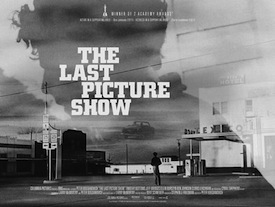 As I write this, the St. Louis Cardinals and the Texas Rangers are tied at two games apiece in the World Series.
As I write this, the St. Louis Cardinals and the Texas Rangers are tied at two games apiece in the World Series.
Game Three will long be remembered for the performance of Albert Pujols, who hit three home runs Saturday – making him one of only three people to do that in a single World Series game. Any time you share a record with Babe Ruth, you know you’re doing something right.
As Chief Justice Earl Warren once said, “I always turn to the sports page first, which reports people’s accomplishments. The front page has nothing but man’s failures.”
Growing up 90 miles south of St. Louis, I come from a long line of Cardinals fans (my grandpa Herman, my uncle Rick, my great aunt Mabel). And it’s no wonder. The Redbirds are second only to the Yankees for the number of World Series championships won since the competition began in 1903.
But as any fan knows, it’s not winning seasons that connect you to a team – just ask any of the devoted fans of the Cubs who haven’t won a World Series since 1908. Their fans continually flock to Wrigley to drink Old Style and to cheer on their perennially losing Cubbies.
As a kid, I recall being a little afraid of the loud Cubs fans who descended on Busch Stadium for games against the Cardinals. I learned early how we got the word “fan” from “fanatic.”
Although I haven’t lived in Missouri in almost 30 years, I remain devoted to the Cardinals. So this latest World Series has me pondering what it means to be a fan.
For some, being a fan means painting your face – or your belly – with your team’s logo. For others, it means making a pilgrimage to the sports Mecca of your choice, whether it’s Camden Yards, Augusta National or Wimbledon.
And for a few, it takes the form of being an anti-fan, hence the classic line, “I root for my team and whoever is playing the Yankees.”
Here’s an example of that. My wife is from Kansas City, and at the disappointing end of the 1985 World Series between the Cardinals and the Royals (dubbed the “I-70 Series”), she bought me a t-shirt to commemorate the event. And to gloat.
The t-shirt had a replica of the Cardinals logo, but instead of two cardinals perching on a baseball bat, they were hanging upside down, lifeless, with the inscription “St. Louis Deadbirds.”
Much has been written about the psychology of why normal, well-adjusted people become raving maniacs on the weekend rooting for their teams. There is a catharsis that comes from screaming coaching advice at the television screen – and researchers have found that some fans feel such a connection to their teams they actually experience physiological changes, including hormonal surges, while watching games. A study at the University of Kansas further suggests that these emotional releases actually result in sports fans suffering fewer instances of depression than the rest of the population.
Fewer instances of depression? Not for the 11-year-old boy watching the Kansas City Chiefs playoff game on Christmas Day in 1971. My hero, soccer-style placekicker Jan Stenerud, missed a 31-yard field goal with 31 seconds left in regulation time. A successful kick would have beaten the Dolphins and sent the Chiefs to the Super Bowl for the third time in six seasons. I was one of the 41 million people watching that game, which the Dolphins won in a second overtime. It still holds the record for the longest NFL game ever played — and the Chiefs never trailed until Garo Yepremian’s game-ending field goal.
At the end of the game, physically spent and emotionally distraught, I ran to my bedroom, threw myself onto the bed and cried – underneath a poster of Chiefs’ wide receiver Otis Taylor, number 89.
I heard a similar story from a friend who is an avid Mets fan who has passed along his passion to his young son. He described a crucial plate appearance by Mets slugger Carlos Beltran in Game 7 of the 2006 National League Championship Series against the Cardinals. With two outs, the Mets were trailing 3-1 in the bottom of the ninth with bases loaded.
My friend’s son looked at his dad with wide-eyed assurance and said he knew Beltran was going to hit a home run. After three successive pitches, Beltran struck out.
The devastated young Mets fan marched out into the backyard and cried in the dark. My friend’s wife looked up and said to him, “You know this is your fault, right?”
But being a fan only goes so far.
On a summer afternoon 40 years ago, my baseball buddy David Brockes came over to my house to hit the ball around our front yard. The only baseball I could find was the one I had gotten autographed by St. Louis ace pitcher Steve Carlton, who would later win four Cy Young awards on his way to the Baseball Hall of Fame.
My parents had driven me to a grocery store in a town 30 miles away to get the autograph from the famed left-hander.
I think you may sense where this story is headed.
Well, we hadn’t been playing long before one of us hit the ball into the neighbor’s cow pasture and – despite searching for a long time – we never found it.
My only regret? That our afternoon game was cut short.




